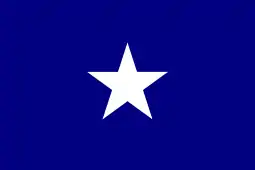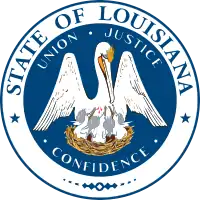Florida Parishes
The Florida Parishes (Spanish: Parroquias de Florida, French: Paroisses de Floride), on the east side of Mississippi River – an area also known as the Northshore or Northlake region – are eight parishes in southeast Louisiana, United States, which were part of West Florida in the 18th and early 19th centuries. Unlike most of the state, this region was not part of the 1803 Louisiana Purchase; it had been under British and then Spanish control since 1763.
Florida Parishes | |
|---|---|
 Downtown Baton Rouge, Louisiana | |
 | |
| Country | United States |
| State | Louisiana |
Geography and demographics
The Florida Parishes of Louisiana stretch from the Mississippi state line on its eastern and northern borders to the Mississippi River on its western border, and Lake Pontchartrain on its southern border. The most populated community is the Baton Rouge metropolitan area. (St. Tammany Parish is part of the New Orleans metropolitan area.)
The Parishes have a land area of 4,685.184 square miles (12,134.57 km2), or 10.755% of the state's land area. Its population at the 2010 census was 1,019,357 residents, or 22.49% of the state's population at that time.[1] Its largest communities are, in descending order of population (2010 census), Baton Rouge, Slidell, Central, Hammond, Shenandoah (CDP), Zachary, Baker, Bogalusa, Mandeville, Gardere (CDP), Merrydale (CDP), Denham Springs, Covington, Lacombe (CDP), and Oak Hills Place (CDP).
History


The area that became the Florida Parishes was at one time part of French Louisiana. Following the French and Indian War, however, the region, like most of the rest of French Louisiana east of the Mississippi River (excluding New Orleans), was transferred to Great Britain. The region became part of the British colonial province of West Florida.
Following the American Revolutionary War, West Florida was the subject of a border dispute between the newly formed United States and Spain, which acquired West and East Florida from the British after the war. The dispute led American and British settlers in the part of West Florida west of the Pearl River to declare an independent Republic of West Florida in 1810 and elected their leader, Fulwar Skipwith, as president. (None of the short-lived Republic of West Florida lay within the boundaries of the modern state of Florida.) The flag of the Republic of West Florida, which is often identified with the Bonnie Blue Flag of the Civil War era, flies on many public buildings in the Florida Parishes. In 2006 the state legislature designated it the "official flag of the Republic of West Florida Historic Region".[2]
The Republic was quickly annexed by the United States, and the present-day Florida Parishes were incorporated into the Territory of Orleans, which joined the Union as the State of Louisiana in 1812. In 1810, four parishes were established in the region: East Baton Rouge, Feliciana, St. Helena, and St. Tammany. Later in the 19th century, five additional parishes were created as follows, with Feliciana Parish ceasing to exist:
- Washington Parish, 1819; from part of St. Tammany Parish
- East Feliciana and West Feliciana Parishes, 1824; by dividing Feliciana Parish
- Livingston Parish, 1832; from part of St. Helena Parish
- Tangipahoa Parish, 1869; from parts of Livingston, St. Helena, St. Tammany, and Washington parishes
In 1990, the state of Louisiana formally designated this part of the state as "the Republic of West Florida Historic Region, or the Florida Parishes".[3] Since 1993, Interstate 12, which runs east and west through the Northshore region, has been officially designated as the Republic of West Florida Parkway.
List of parishes
References
- "U.S. Census website". United States Census Bureau. Retrieved 2020-10-09.
- "2006 Louisiana Laws – RS 25:705 — Bonnie blue flag adopted". Justia US Law. Retrieved 2 Aug 2012.
- "LA Rev Stat § 25:701 Republic of West Florida Historic Region". Justia US Law. Retrieved 2 Aug 2012.
